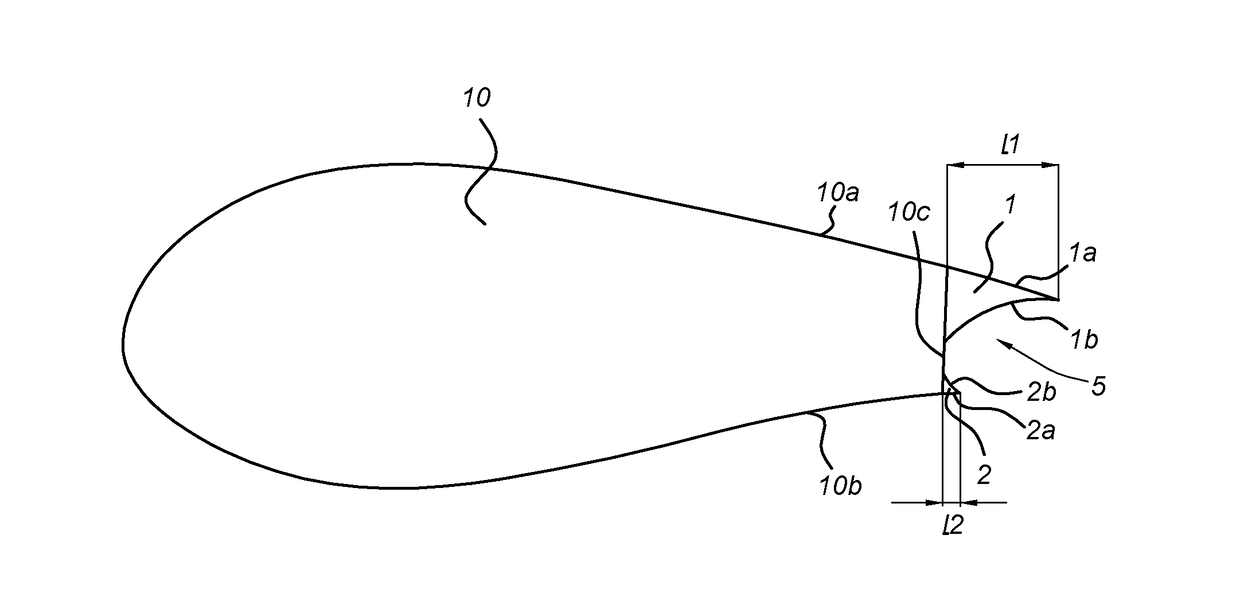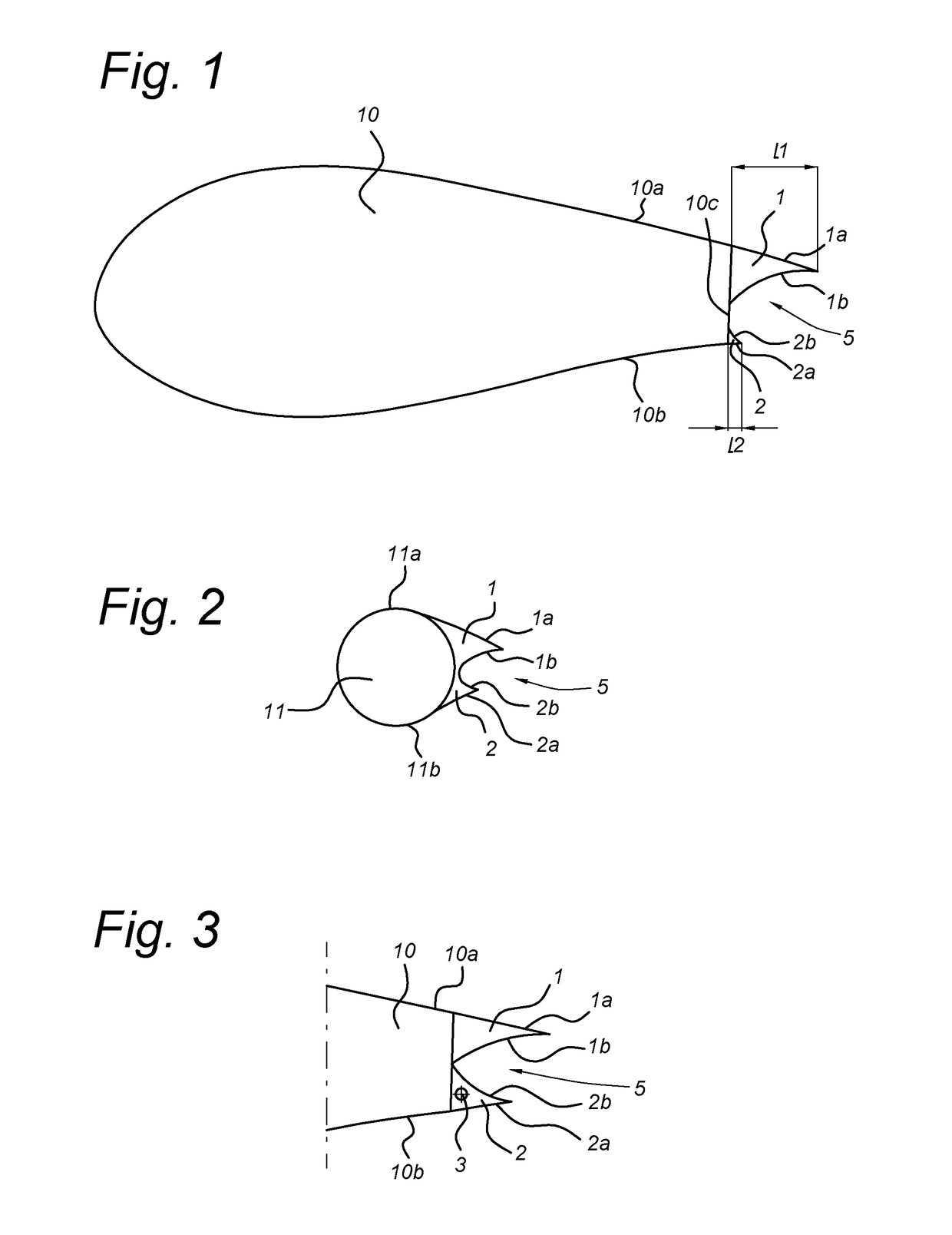Swallow tail airfoil
a technology of airfoil and tail, which is applied in the field of aerodynamic elements, can solve the problems of increasing the cost of development and/or production in order to implement such solutions, increasing the cost of maintenance, and introducing more complexity in the airfoil, so as to achieve the effect of cost saving and simple assembly and attachmen
- Summary
- Abstract
- Description
- Claims
- Application Information
AI Technical Summary
Benefits of technology
Problems solved by technology
Method used
Image
Examples
Embodiment Construction
[0016]The root region of a wind turbine blade has to guarantee the structural properties of the blade, even if that would penalizing the aerodynamic performance of that part. However, with the increasing size of wind turbines, good aerodynamic characteristics at the root are desirable to increase the overall performance of the blade.
[0017]Flat-back thick airfoils are popular nowadays as aerodynamic element in e.g. wind turbine rotor blades because the blunt shape of the trailing edge contributes to improve the lift performance of the airfoil and also preserving its structural properties. The drawback of such solution is the increase of the base drag, flow unsteadiness and, as a consequence, the increase in noise (although the noise at the root is not the main source of noise).
[0018]FIG. 1 shows a cross sectional view of a flat-back airfoil 10 along the airflow direction of e.g. a wind turbine rotor blade. The rotor blade is provided at least partly (along its length) with an aerodyn...
PUM
 Login to View More
Login to View More Abstract
Description
Claims
Application Information
 Login to View More
Login to View More - R&D
- Intellectual Property
- Life Sciences
- Materials
- Tech Scout
- Unparalleled Data Quality
- Higher Quality Content
- 60% Fewer Hallucinations
Browse by: Latest US Patents, China's latest patents, Technical Efficacy Thesaurus, Application Domain, Technology Topic, Popular Technical Reports.
© 2025 PatSnap. All rights reserved.Legal|Privacy policy|Modern Slavery Act Transparency Statement|Sitemap|About US| Contact US: help@patsnap.com


